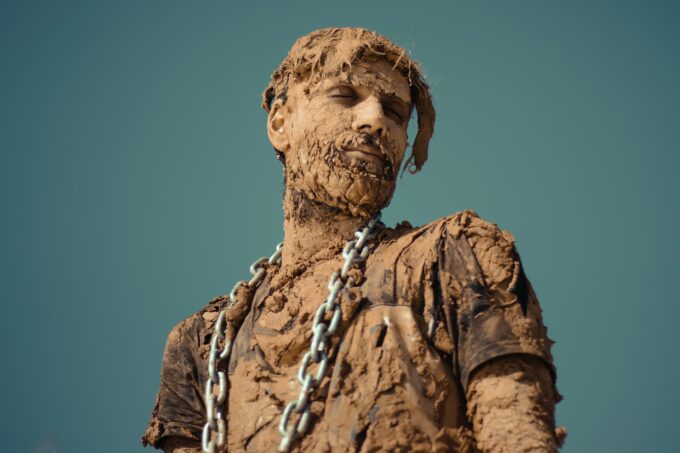IT has helped to enhance efficiency and streamline processes in almost every industry. And while that’s something we’re grateful to see (and benefit from), Aliter is interested in how IT goes beyond industry – to make a social impact. Here are 10 companies we think are making a difference with IT (in no particular order!) Read on about what they’re doing, and why we’re inspired.
1. FAIRPHONE
Hailing from The Netherlands like us, Fairphone created the first ethical, modular smartphone, reminding consumers that we shouldn’t have to choose between a great phone and a fair supply chain.
But their social reach goes further. Fairphone is working to ensure the materials that go into their product are safe and fair by going straight to the source – mining. They’re actively engaging with partners and industry to source less hazardous materials, while waging against child labour and unsustainable mining practices, and advocating for better work conditions. It’s a bold approach making a dent in the supply chain, and helps to raise awareness of the issue among both consumers and industry.
2. CLOSING THE LOOP
Also in the phone space, Closing the Loop (CTL) is working to ensure the production and consumerism of mobile devices is more responsible – on a global scale. They call it One for One. For every device their customers buy, CTL collect and responsibly recycle a scrap phone – offsetting their device. Partnered with local communities in Africa, scrap phone collection is done in emerging countries, and recycled there, or shipped to certified facilities. The waste is then safely and cleanly turned into reusable material (urban mining). This closed loop system is better for the environment, and allows participating companies and individuals to be a part of the impact.
“We think connecting and involving the customer in sustainable initiatives is just as important as engaging partners and industry stakeholders. It helps spread awareness, and the more we know and connect, the greater the possibility for impact.”
3. PATAGONIA
Patagonia is engaging people in a different way. The environment has always been central to their brand, and they’re no stranger to the power of IT when it comes to supporting it. Their new platform Patagonia Action Works aims to connect individuals with environmental nonprofits, helping them to get involved in volunteering, events and campaigns that matter to them. By enhancing visibility of causes and providing a simple way to get involved, the platform is helping to address various environmental issues.

4. CAUSES
In the same vein, Causes is not only helping people to discover and engage with causes that matter to them, but provides the platform for organizing their own campaign. It’s crowdfunding meets crowdsourcing. By sharing the issues that impact their communities, users have the potential to gather the support of a like-minded, passionate audience to work together on finding a solution. With individuals driving each cause, like Patagonia, the platform is user-friendly, to ensure people can easily pledge their support.
Not only is Causes an example of the power IT has to connect people, but of how IT empowers individuals to take matters into their own hands.
5. KHAN ACADEMY
Next up, with a mission to provide free, world-class education to anyone, anywhere, Khan Academy peaks our interest. An online ‘global classroom’, they’re empowering people of all ages around the world to learn at their own pace – covering a range of topics from personal development, to math, careers and entrepreneurship.
Learning in the traditional school environment isn’t for everyone, and Khan Academy is an example of how IT can diversify an industry (in this case, education), providing new alternatives and opportunities.
6. KLASSECONTACT
But what about those who don’t have easy access to technology? KPN Mooiste Contact Fonds (MCF) contributes to various social projects with the aim of promoting social contact for those in need. And large in part, technology provides the solution. Among initiatives, we think KlasseContact stands out. A project together with EDVenture, KlasseContact helps long-term sick children who can’t attend school still participate in the class. From home or in hospital, children use a laptop that is connected to an ICT set in the classroom, allowing them to engage in lessons and with their classmates. This smart use of technology decreases learning delay and helps them to feel connected.

7. MEDIC MOBILE
Sometimes it’s not a lack of access to IT or resources that inhibits people, it’s location. Medic Mobile connects the developing world’s poor with medical care – using mobile phones to improve health in hard-to-reach communities. Mobile Medic is a suite of software tools allowing health workers to assess patients’ symptoms and transmit medical records using text messages. It’s the technical lead for what has become the Community Health Toolkit, which assists health workers to track outbreaks faster, treat illnesses door-to-door, and communicate about emergencies, among other benefits. So far they’re making a difference in 23 countries across Asia, Latin America and Africa.
Importantly, Medic Mobile uses a human-centered design approach – championing the creation of technology together with healthcare workers for optimal impact.
8. MY LIFE AS A REFUGEE
One of many apps giving a voice to those in need is UNHCR’s My Life as a Refugee, designed to give users insight into real-life situations faced by refugees. Taking on the role of one of three characters in the app, users are faced with difficult and life-changing decisions that many refugees have to make each day.
Often what is out of site is out of mind, and this app is an important tool to raise awareness around some harsh realities many aren’t familiar with. It could also ignite empathy, engaging users to identify with the character’s situation, encouraging them to consider supporting UNHCR initiatives.
9. SMAPPEE
This app is helping consumers track and reduce their domestic energy consumption. Smappee comes with a clip-on sensor to connect to your fuse box, which reports back to the app with findings. By providing users with the information they need to monitor their energy and appliance usage, they can better grasp the associated costs (and where any big energy guzzlers might be). Not only does the user become more mindful, but they’re able to lower their energy bills. Simple, but effective.
10. GOOD ON YOU
Speaking of mindful consumers, it’s increasingly challenging to make conscious purchasing choices today. Good on You seeks to change that – helping consumers find the information they need about a brand’s impact on people, the planet and animals – fast. With a focus on ethical fashion, the app brings together data about more than 2000 fashion brands aggregated from public information, available via certification schemes (think Fair Trade or Global Organic Textile Standard).
It also includes functionality to provide feedback to brands listed, if users want to encourage them to do better with issues of importance.
As they see it, consumer trends matter – “when a critical mass of users turn towards brands that avoid harm, we create a movement for change” – and we couldn’t agree more.
There you have it – just a few companies using technology for social good. And there are some underlying themes – these companies help to connect and empower marginalized groups or those with limited IT access. They’re fighting for fairer conditions and processes, and encourage us to become more mindful consumers.
The power of the user is also clear – not just to make conscious decisions, but to stand up for social change. Be it using IT to create their own movement, connecting with others to make a difference, or adopting smarter, user-centered design.
It’s inspiring to know there are so many others like us out there – who believe it’s time to do better in business for people and our planet. Aliter Networks aims to have half a million IT products reused by 2025, and we’re happy to say we’re making progress. Since 2009, we’ve reused 125,115 IT network products and prevented 276,383kg of IT waste!
We’re looking forward to moving further towards this goal together with our team, clients, partners and supporters in 2019.





